Research and analysis
In Armenia, for a substantial portion of crowd workers, working for online gigs is their only source of income. According to research and a survey conducted by the University of Yerevan among 2146 online adults aged 16 – 65 across Armenia, 62% said they were looking for offline household work like carpentry, cleaning, etc. via online platforms. Most people said they were looking for different types of work outside their occupational roles.
We decided to focus on key areas like functionality as well as on making an effective design that’s convenient from a user’s perspective. Splitting the functionality into two separate apps for buyers and sellers didn’t seem feasible as we discovered that the same set of users was likely going to use either app.
To obtain a better picture of how the on-demand app should look like, we analyzed some non-local competitors which gave us an idea about what the competitors were doing and what kind of opportunities the app had.
User personas
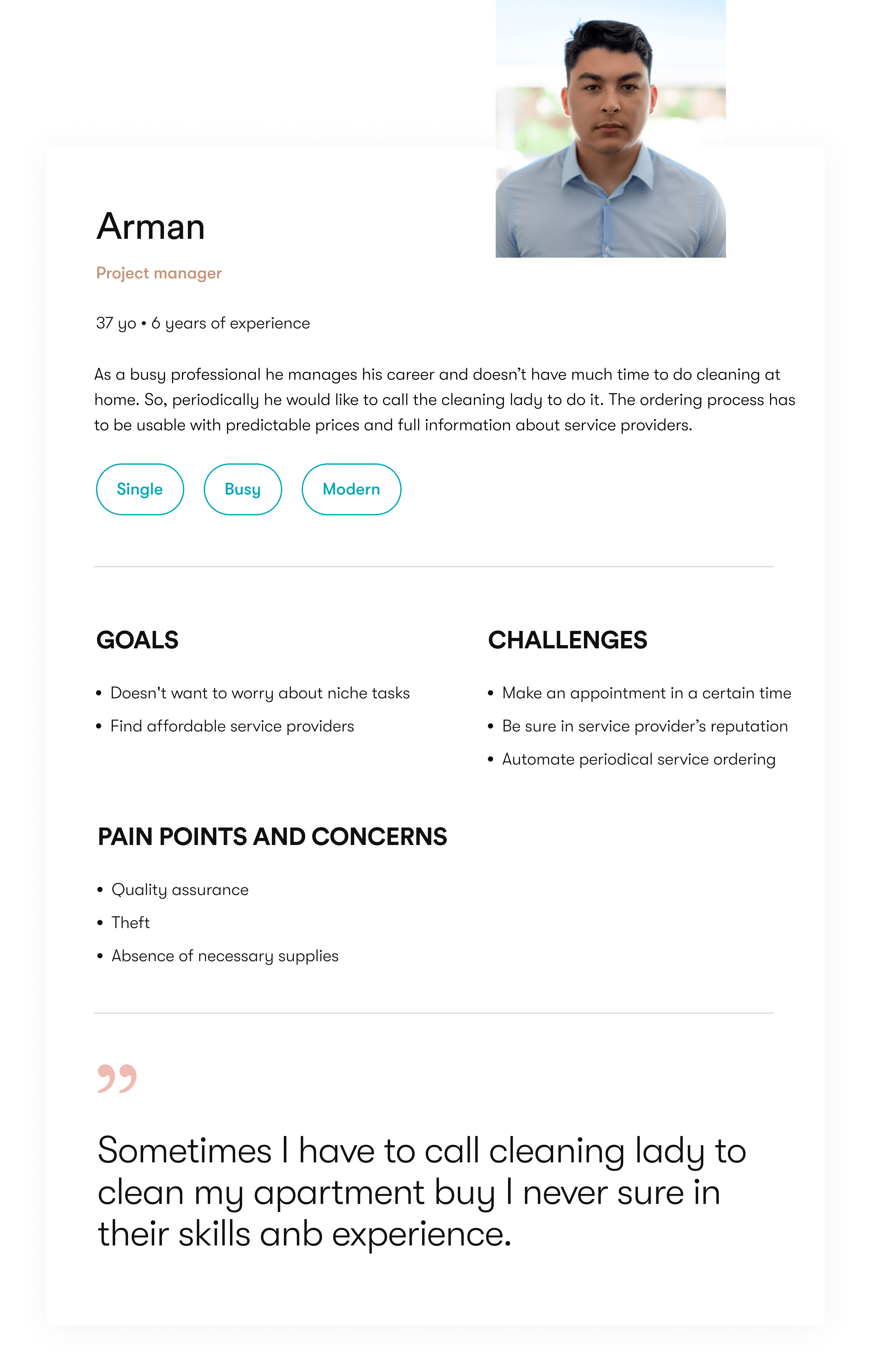
Flow diagram
We made a comprehensive map that shows the user flow of the key processes depicting the journey of both types of users – Customers and Service Providers.

Logo design
A business’s logo is more than just a mark used to identify it. It is one of the most valuable and often overlooked assets that every company has at its disposal. It is the first impression a prospective client or new customer has of a business, a way to stand out from the competition in a crowded marketplace, and the foundation on which to build the entire brand.
Keeping the functionality of the app in mind, we wanted to design a logo that was easy on the eyes and evokes a sense of o assurance.

What is included in the Profi app
Application parts
The idea was to divide the App into the following parts:
- Requests Discovery
- Post a Request
- Sending Services Proposal to Requests
- Chat
- Profile
Ideation
Once we finalized the core user flow and architecture of the App, we were excited to convert it into a reality.
Taking the user flow, we started drawing some sketches with pen and paper.
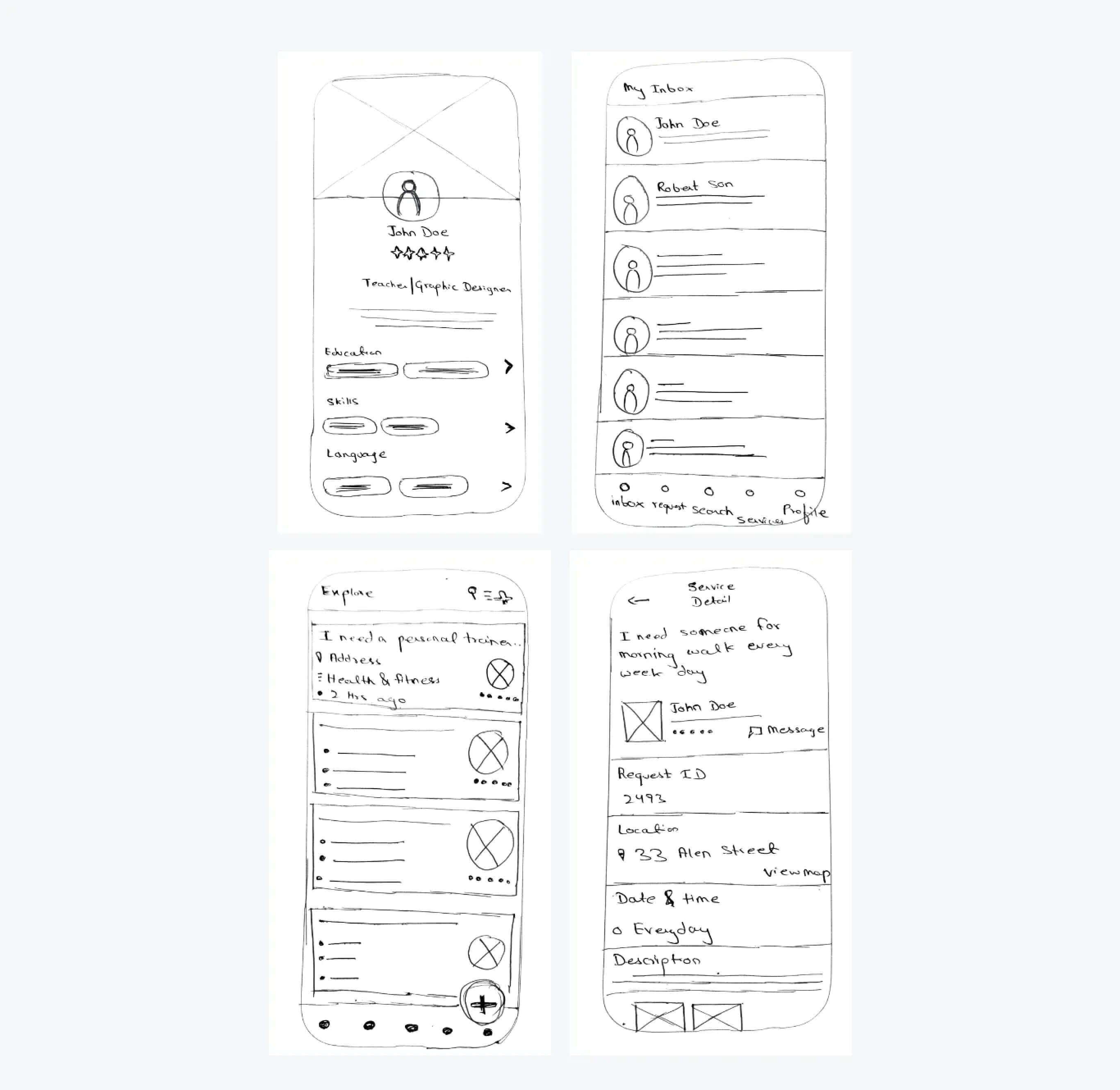
Interface design
After all the mind mapping, user flow journey mapping, and napkin prototyping — we started designing the App.
Onboarding flow
We Initially started with the onboarding flow. We wanted to make the entire process intuitive so we decided to go with the Phone number and Password-based Authentication.

We kept it simple with auto-registration with a Facebook account or, an alternative manual fill-out form of 3 fields.
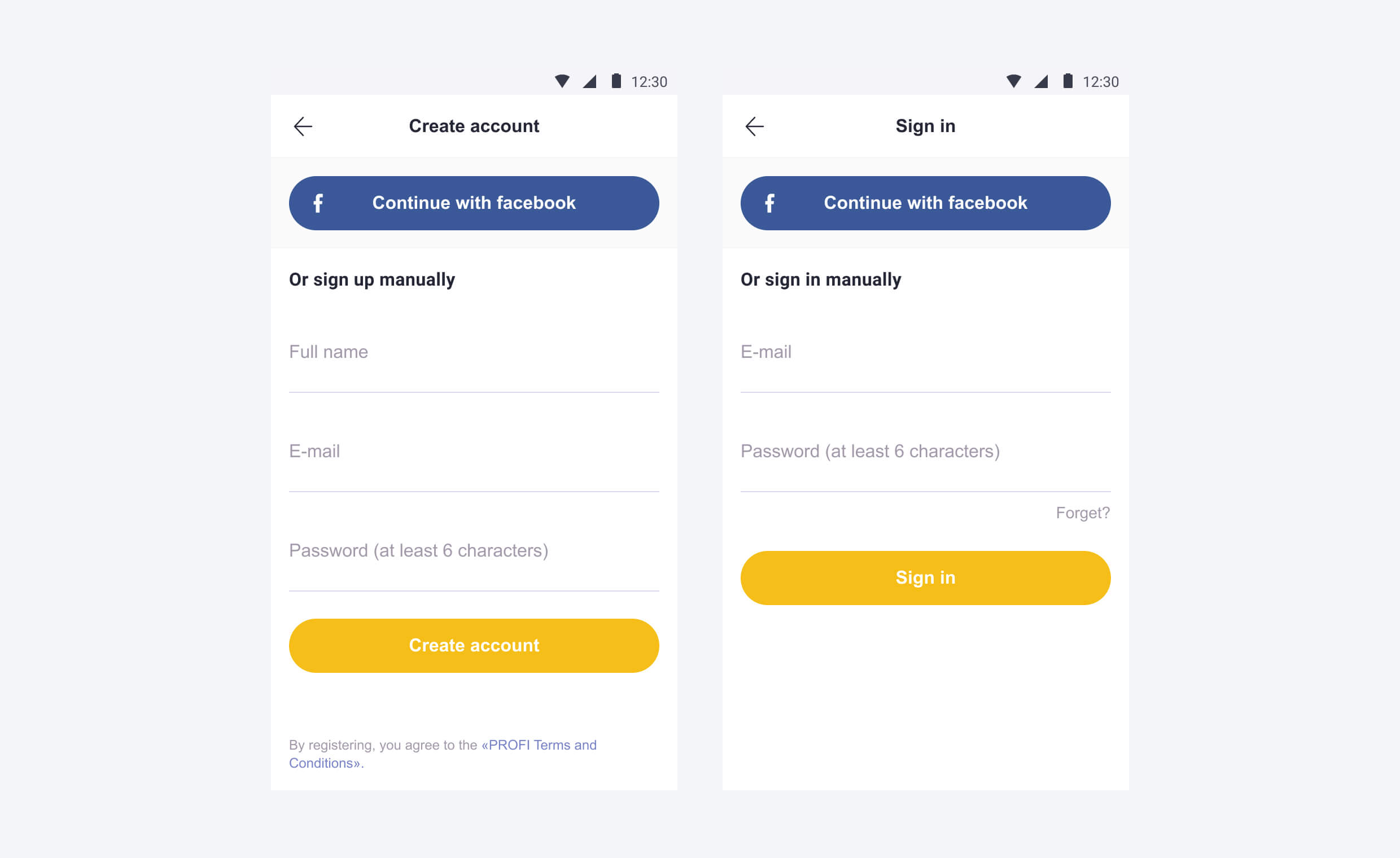
Add location
A user can define its location with the geolocation feature and by typing it manually. It's important for the ordering process where location can be suggested by default.
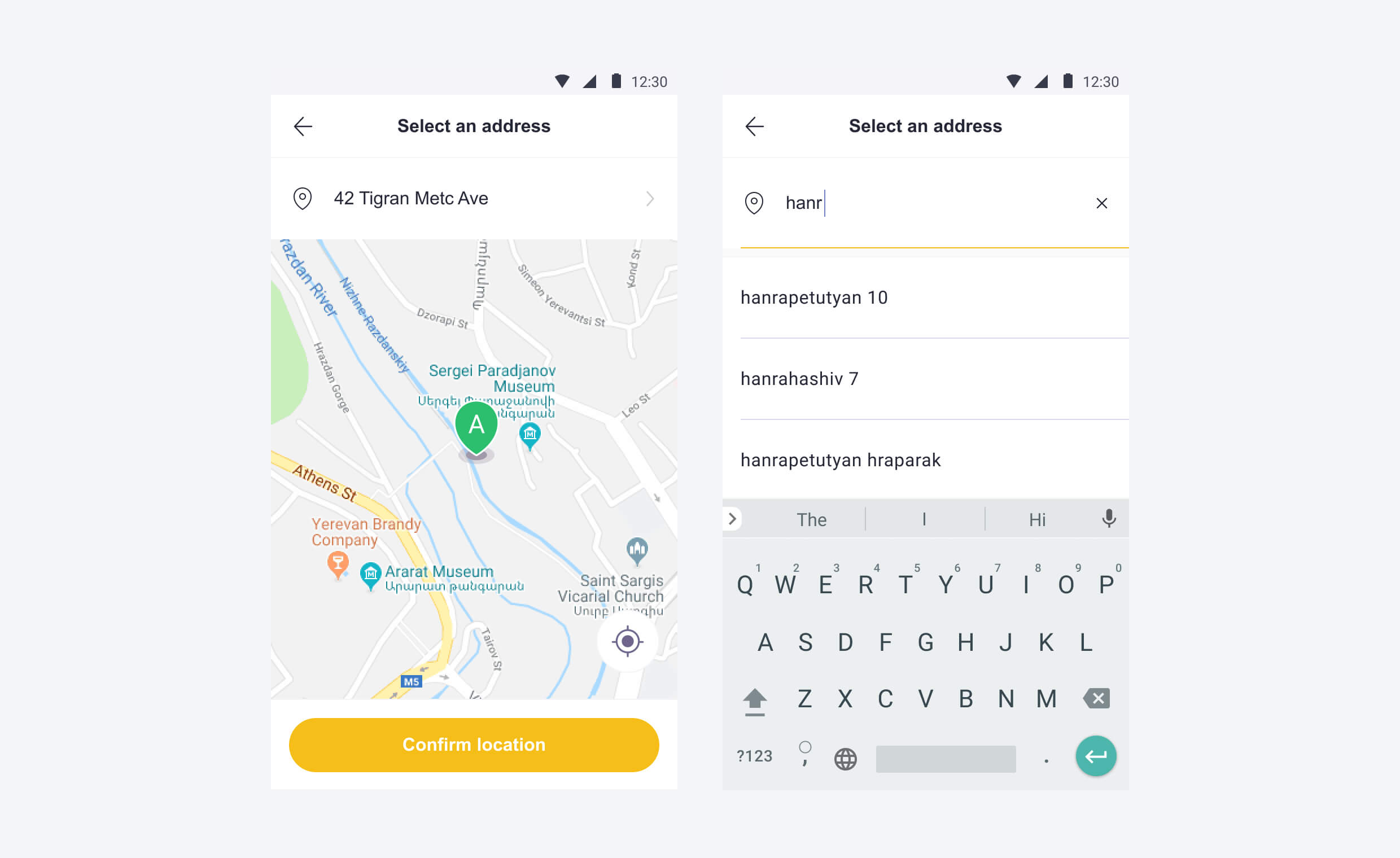
Select a service
From a business perspective, we chose several categories with the customers who will order periodically. To know their needs we organized an online survey among our target group of potential users.

Based on the collected data we defined 4 categories with around 3-5 services in them. The short number of services lets us focus more on their parameters and user experience.

Order a service
Unified controls in the ordering form let's keep it similar for e most popular services than all services. There is only a need to define what information the business needs from customers and assemble sections in a form.

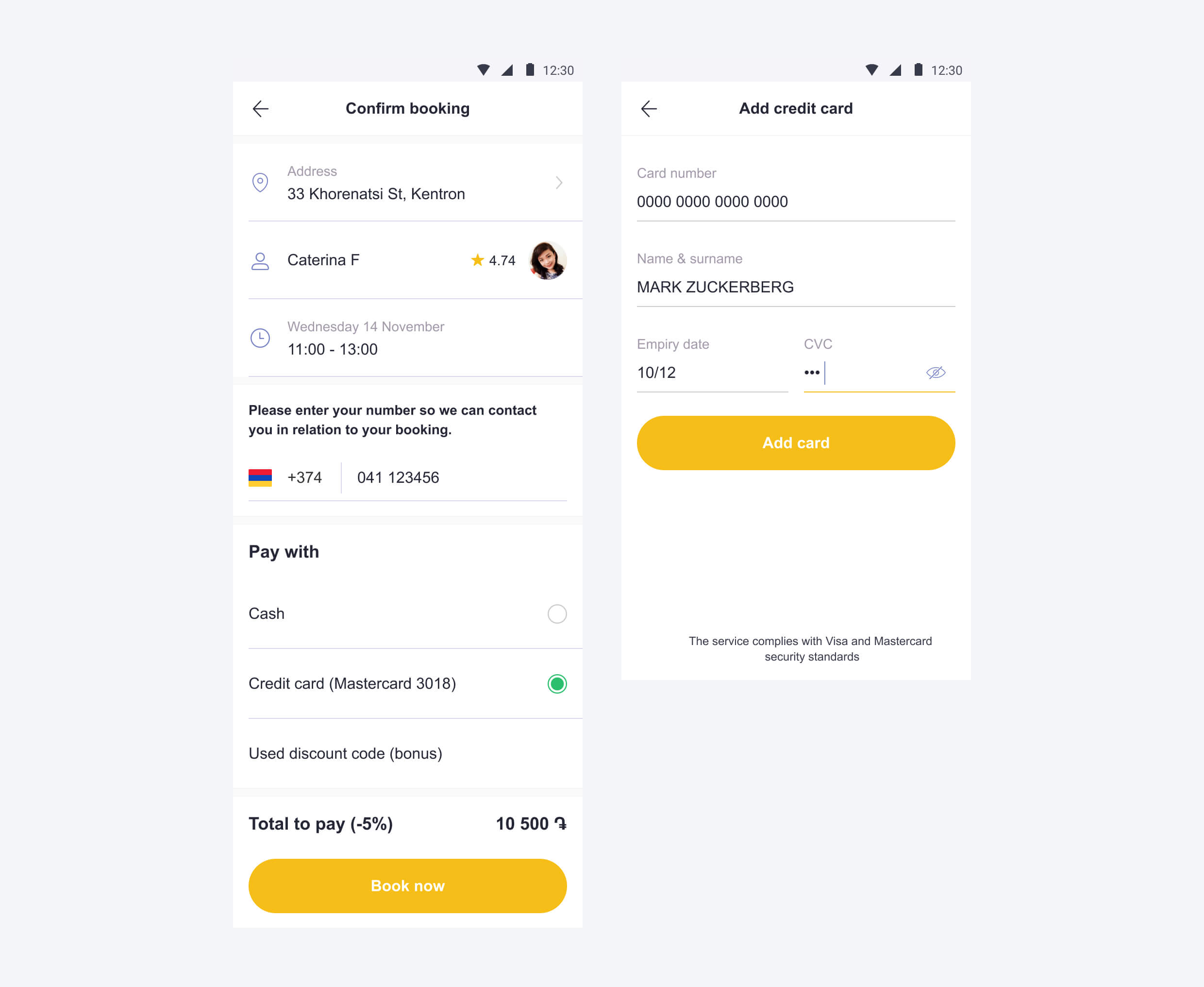
Orders
After confirming an order, it will be added to the "Booking" tab. In real-time workers will send applications and customers can see information about them and chat with them.
Conclusion
We were glad that we could translate our client’s dream into a reality. Following the core, the UX process helped us speed up the design lifecycle. Still, we also achieved our goal of making an App that is complex but very much simple and intuitive in usage.
